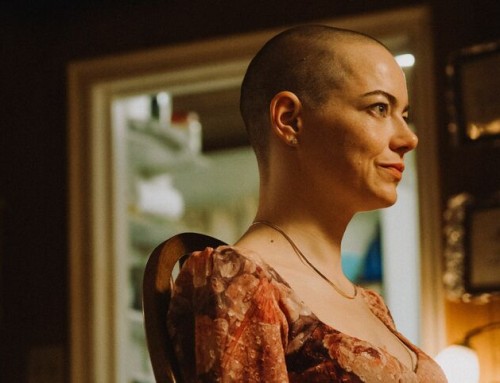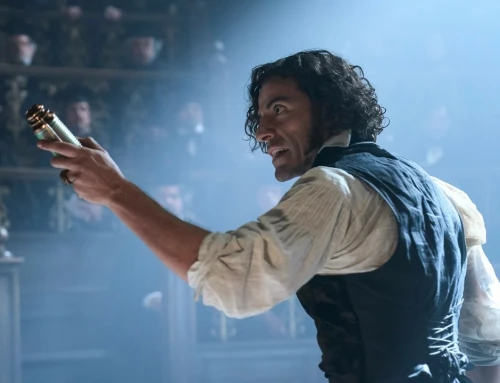![]()
Anyone around the early days of the Youtube film scene is most certainly familiar with Chris Stuckmann. A warm and welcoming figure whose passion for film separated him from the pack of early-Youtube film critics, the Ohio-native has been one of social media’s most influential and good-natured soldiers of cinema. After shifting his focus to write and direct his first feature film, Stuckmann sought the backing of his fans via Kickstarter to finance his passion project. After a record-breaking campaign of over $1.3 million and the backing of producer/genre titan Mike Flanagan and a release from NEON, Stuckmann’s path to legitimacy as a filmmaker has been more notable than most. While film critics-turned-filmmakers have harkened back to the likes of Francois Truffaut, Jean-Luc Goddard, Peter Bogdanovich and Park-Chan Wook, none have originated in the more recent digital age. Stuckmann’s work is miles away from being lumped into such company as his directorial debut boasts clear signs of a skilled filmmaker, but struggles with his duties as a screenwriter and storyteller.

Courtesy Neon
In 2008, a group of Youtube paranormal investigations named the “Paranormal Paranoids”, lead by Riley Brennan (Sarah Durn), suddenly went missing after investigating an abandoned amusement park in the ghost town of Shelby Oaks. Of the four members, three of their bodies were found, with Riley still missing. All the leads have dried up, despite the tragedy becoming infamous online, turning the researchers into something of cult celebrities. A decade later, Riley’s older sister Mia (Camille Sullivan, terrific in the little-seen Hunter Hunter) still holds out hope that her sister is alive despite discouraging reports from investigating officers like Detective Burke (Michael Beach). When a documentary film crew interviews Mia about her long-lost sister, new evidence resurfaces that may hold the key to unlocking the mystery of Riley’s disappearance. This forces Mia to take matters into her own hands, leading her to the abandoned town of Shelby Oaks to find answers.
Written and directed by Chris Stuckmann, Shelby Oaks is partly an investigative mystery procedural mixed with supernatural elements dealing in demonic entities and the occult, with found footage elements stemming from the likes of The Blair Witch Project and Lake Mungo. The opening 15 minutes begins as a mockumentary covering the disappearance of the “Paranormal Paranoids”, their cult internet following and the ensuing fallout. This segment is bookended by an interview with Mia, who maintains that her sister is still out there. After Mia’s interview concludes, the film shifts its perspective towards a more traditional narrative framing. This shift showcases Stuckmann’s boldest filmmaking decision as the audience is able to fully immersive themselves in the greater world of the film before the scope narrows to a more grounded storytelling device.
One of the great highlights of Shelby Oaks is its rich sense of ominous atmosphere. Emphasized greatly by thoroughly eerie cinematography from Andrew Scott Baird (Blood Relatives), Stuckmann’s film makes splendid use of practical locations. For his first directorial outing, the filmmaker captures woodland terror with an astute visual eye. Foreboding locales such as an abandoned insane asylum and ghostly amusement park provide a surprising amount of dread and fear to the tone of the film. One particular set piece, set in the decrepit mental asylum, is a prime showcase of Stuckmann’s ability to churn up palpable suspense and a well-placed jolt. His use of demonic imagery is also rather effective, but others — namely CG-enhanced Hellhounds, prove to be detrimental. Stuckmann accomplishes a great deal of world-building and directorial confidence early on before leaning too heavily on his influences.

Courtesy Neon
Stuckmann falls back on his cinematic homages far too often to make his film stand on its own two feet. While the derivativeness of the opening act feels somewhat endearing, as the film progresses, there’s a lack of substance to these influences, rendering the film rather hollow from a narrative standpoint. Any viewer familiar with some of the genre’s most influential films from the past decade will be several steps ahead of where the final act winds up, leading to an anti-climax of sorts. This unfortunate predictability truly hinders any momentum Stuckmann had garnered up until then. His work as a filmmaker is far more impressive than his talents as a screenwriter. Once the film reaches its conclusion, the critical lack of character development and overall thinness of the script become unavoidable.
Despite an emotionally compelling performance from Camille Sullivan, none of the characters in Shelby Oaks have much to them beyond their plot-driven motivations. Mia’s well-meaning husband, played by Brendan Sexton III, is a total blank slate of a character, offering very little to the overall narrative. Screen legend Keith David appears in one scene as the warden of the since-abandoned mental asylum in Shelby Oaks, who lends a sense of gravitas to the picture. Veteran character actor Robin Bartlett (Shutter Island) gives a memorably creepy performance as an elderly woman living in the woods of the titular ghost town.

Courtesy Neon
Shelby Oaks features great potential from first-time filmmaker Chris Stuckmann, but is undercut by slavish devotion to countless influences and lack of a fully-formed screenplay. Despite a commanding lead performance from Camille Sullivan and a firmly dread-inducing sense of atmosphere, this is a directorial debut that struggles to find an identity. Stuckmann boasts a great deal of reverence for his influences, but is rarely able to transcend them into a satisfying whole. It is refreshing to see someone from this generation of media translate their passion and dedication into a feature film as sturdily-made as Shelby Oaks, but here’s hoping his next project finds smoother footing.
Shelby Oaks is now playing in theaters.








Leave A Comment